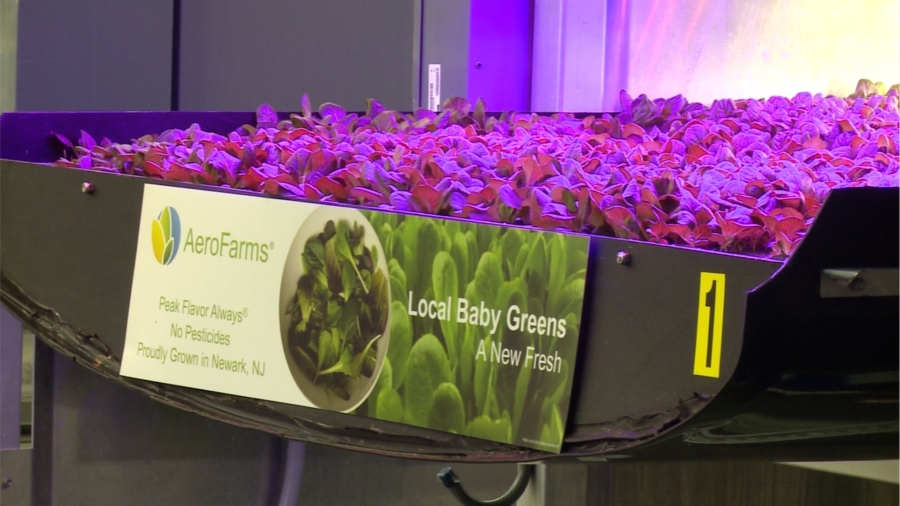Bowen Xiao, reporter:
I’m here at the global headquarters of Aerofarms, the
world’s largest indoor vertical farm to find out if it
really is the future of farming.
Startup company Aerofarms, in Newark, New Jersey is rethinking how we grow produce.
Around the world, food and water shortages highlight a growing problem.
Traditional farming drains too much resources, and leaves a big environmental footprint.
Aerofarms uses patented technology to reduce the environmental impact of farming.
It uses re-usable cloth that can last years to grow seedlings, instead of soil.
Concentrated mists feed the plants.
And 24-hour LED lights control the growth, size, texture,
and other traits of the greens.
Marc Oshima, Co-founder, Chief Marketing Officer
We’re giving it exactly what it needs, in terms of nutrients,
in terms of light, in terms of environment. So it’s an
opportunity to really transform agriculture.
Aerofarms uses 95% less water compared to field farming and,
it’s 130 times more productive per square foot than traditional farming.
Marc Oshima, Co-founder, Chief Marketing Officer
One, we talk about the vertical nature, we talk about a faster
crop cycle so 12 – 16 days means up to 30 harvests a year,
out in the field you know, you’re talking about 1 harvest.
It also helps reduce transportation emissions by an average of 98%,
since most salad greens are transported from other states.
The startup is able to control everything during the farming process,
eliminating unstable factors found in traditional farming.
Marc Oshima, Co-founder, Chief Marketing Officer
This is the future, we can enable local production, we
can be independent of the weather, it’s indoors it’s
controlled, we’re able to optimize an even better
product.
The company tracks all data during the farming process.
Their team of data scientists analyses how they can improve.
The company employs 120 people and has raised $50 million
in funding from investors like Goldman Sachs.
But it’s not all pros. The produce grown is limited mainly to salad greens.
Growing other larger crops like corn, must still be done traditionally.
This limitations dampens its potential impact on the agriculture industry.
The cost and energy efficiency of running lights 24/7,
is no small thing either, even if LED.
The farm grows over 250 types of leafy greens and herbs.
They sell to restaurants under their retail brand Dream Greens,
to stores like ShopRite, Wholefoods, and Freshdirect.
Bowen Xiao for NTD Television

